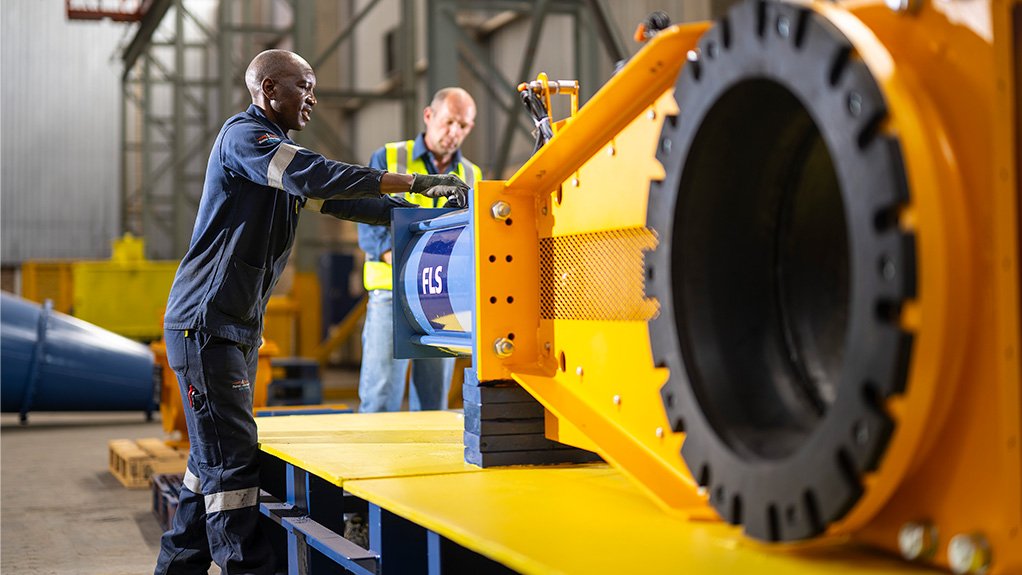Well known for use in abrasive slurry applications, KREBS Technequip knife gate valves minimise pressure drop across the valve by being fully out of the pipeline when open. The new generation valves allow less stockholding of spares through the enhanced interchangeability of components.
“While the bodies of the flange-type valve and the wafer-type valve will differ, for instance, other components like the gate, actuator and wiper blades are standard,” explains FLSmidth regional product line manager: pumps, cyclones and valves Herman Britz. “This means that the components for a 200 mm flange valve, for instance, will also fit on the 200 mm wafer-type valve.”
The valves are widely used in mineral processing across a range of commodities and materials, from phosphates to the platinum group metals.
“The focus of our design was for harsh, abrasive applications – where these valves have proved their worth globally,” he says. In sizes from 50 mm up to 1.3 m in diameter, the valves match the pipe sizes in the market and are designed to deal with a wide range of pressures and process conditions. He highlights the ‘full port’ nature of the valve, reflecting that the valve’s inside diameter will be the same as the pipe when the valve is fully open.
“This reduces any pressure loss as the material passes through the valve, and ensures that there is no turbulence, which also reduces the wear rate,” he explains. “The gate removes itself completely from the flow of material, which is a key differentiating factor.”
He also points to the valves’ push-through or self-cleaning design, which is a self-flushing function which eliminates the need for a packing gland. As the gate closes during actuation, material is ejected out of the bottom of the valve, ensuring that there is full closure of the gate and a reliable seal is created. The internal wear sleeve also contributes to the valves’ durability and performance.
“The wear sleeves on our knife gate valves are the only surface that is in direct contact with the slurry,” says Britz. “By protecting the other parts from wear and tear, the sleeves reduce the need for replacement of parts.”
A bubble-tight seal is designed to ensure that there is no spillage, whether the valve is open or closed. The sleeves can be replaced in the field, obviating the need for a specialised workshop.
EMAIL THIS ARTICLE SAVE THIS ARTICLE
To subscribe email subscriptions@creamermedia.co.za or click here
To advertise email advertising@creamermedia.co.za or click here













